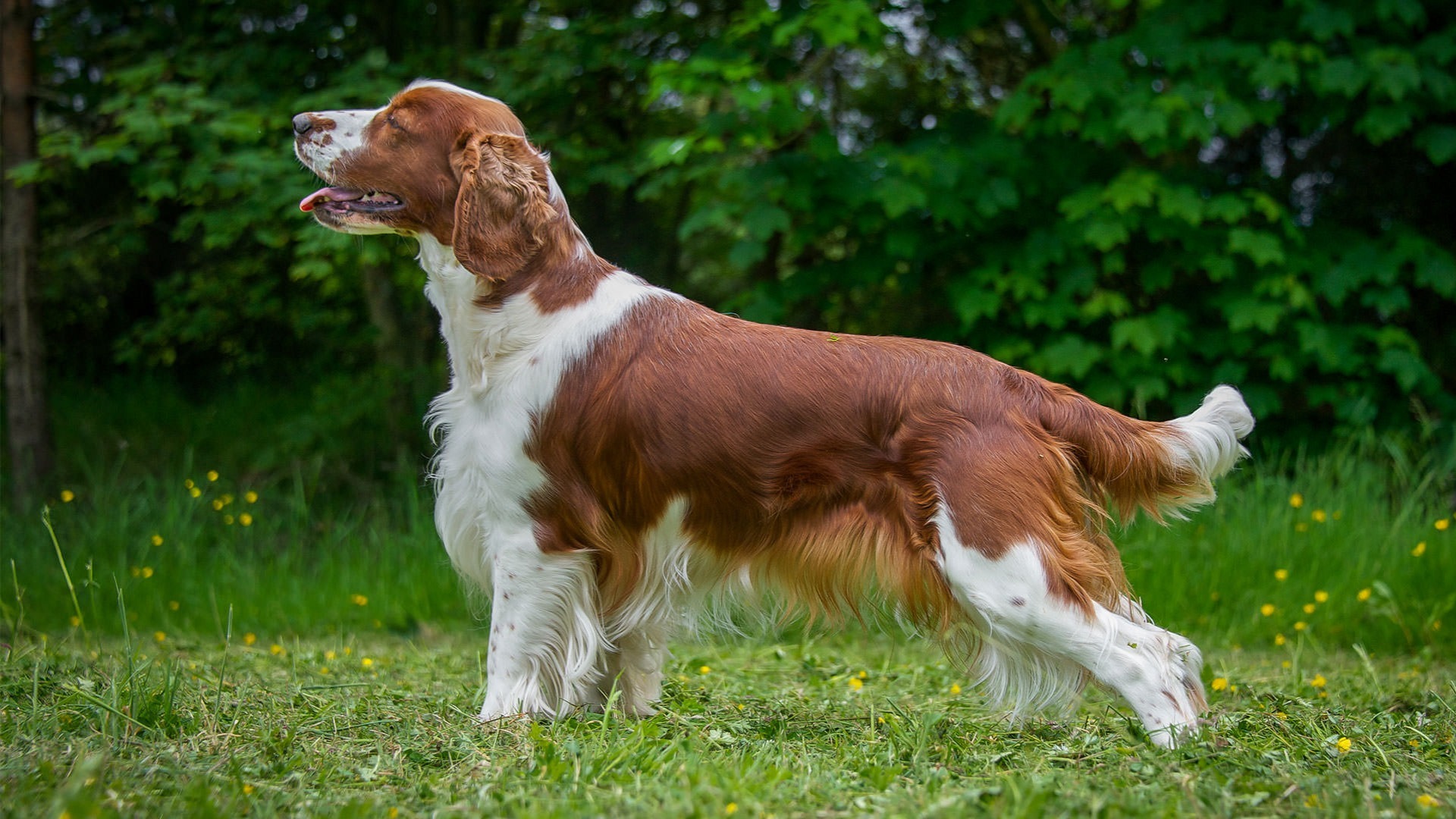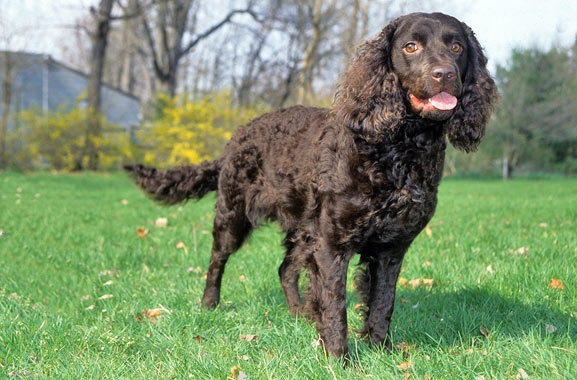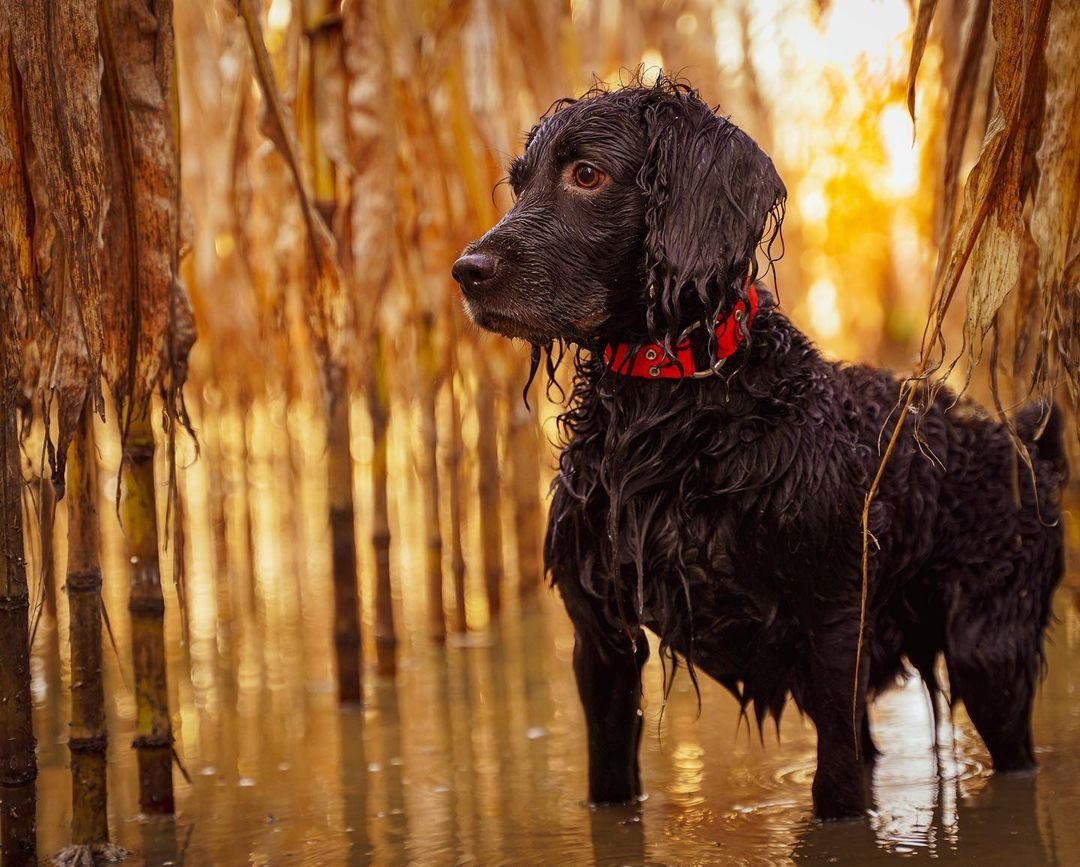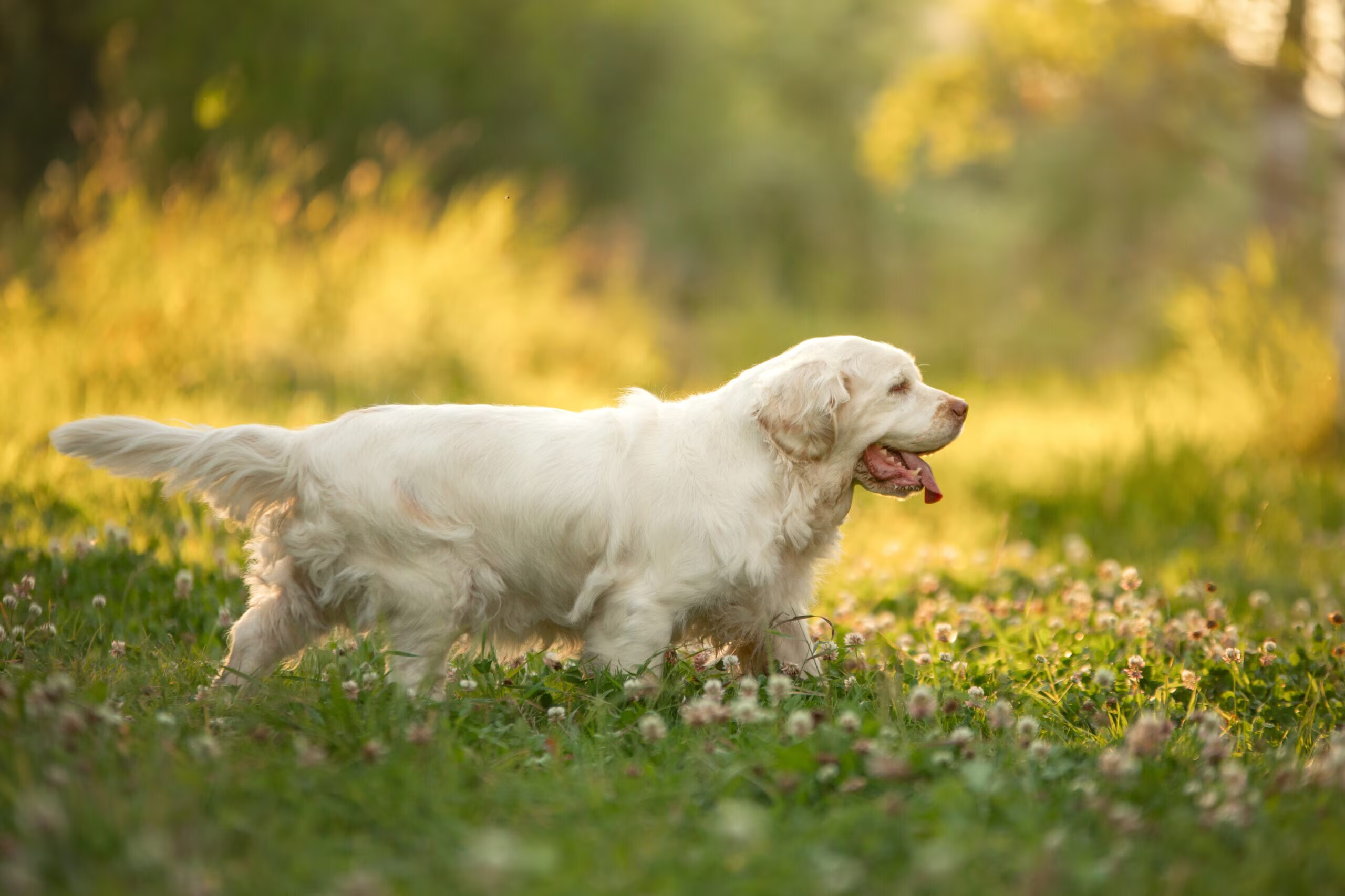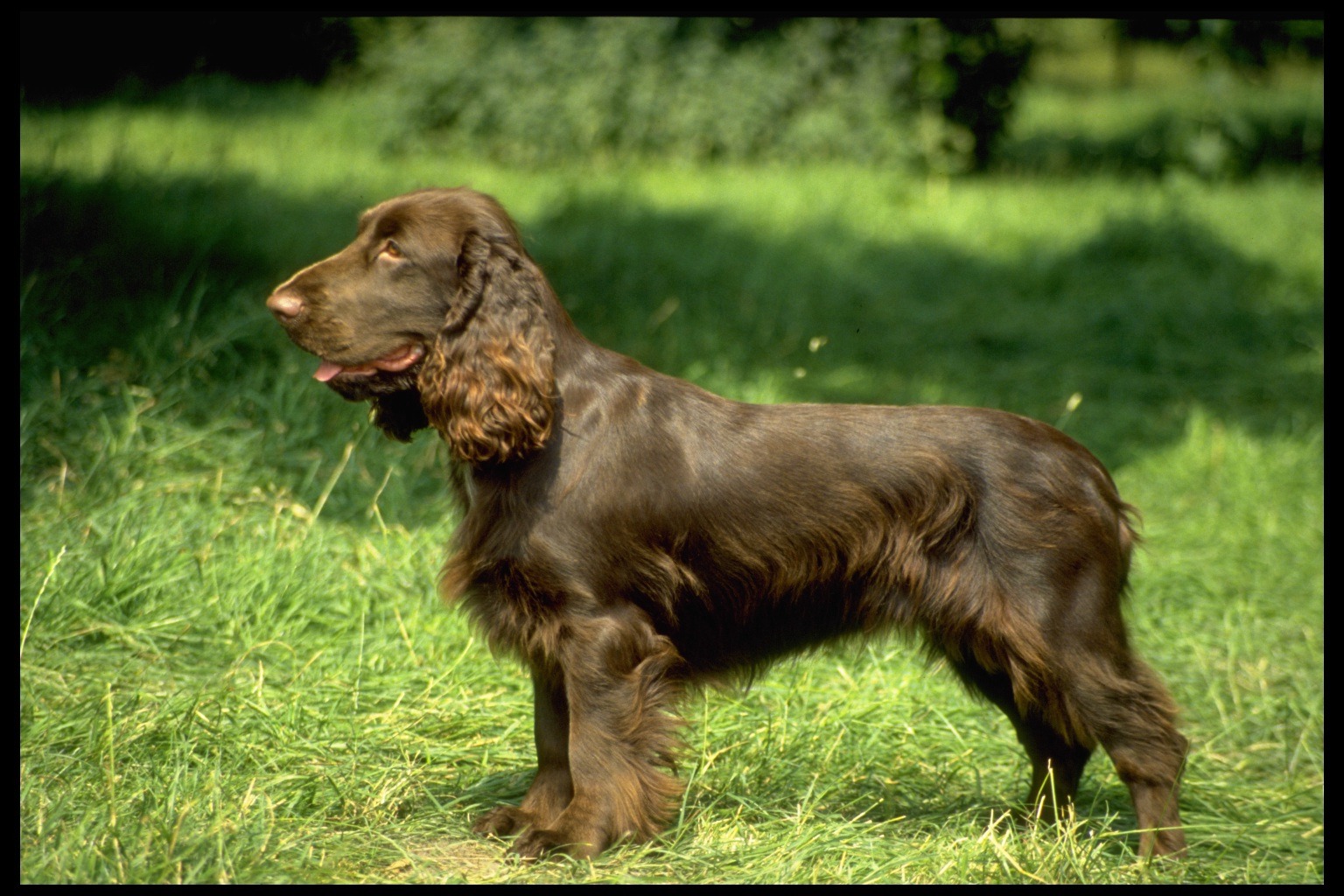The first time I encountered a Welsh Springer Spaniel, I actually mistook it for a small Irish Setter. As the dog bounded over, I was struck by its beautiful rich red and white coat and the most soulful, expressive eyes I’d ever seen on a canine. The owner smiled knowingly—apparently, she was used to people being unfamiliar with her dog’s breed. “This is Rhys, he’s a Welsh Springer Spaniel,” she explained. “They’re not very common, but they’re absolutely wonderful dogs.” After spending just fifteen minutes with Rhys—who enthusiastically showed me his favorite toy, demonstrated his impressive sit-stay, and gently leaned against my leg for pets—I was completely smitten with this lesser-known spaniel breed.
Here at pawtrix.wiki, we’re passionate about highlighting all dog breeds—not just the popular ones that everyone recognizes. The Welsh Springer Spaniel definitely qualifies as one of the canine world’s best-kept secrets. These medium-sized, athletic dogs combine the sporting abilities of their spaniel heritage with a uniquely gentle, devoted temperament that makes them exceptional family companions.
Whether you’re actively considering adding one to your family or simply curious about this distinctive breed with the gorgeous red and white coat, there’s a lot to learn about these special dogs from Wales. Unlike their more famous cousins (the English Springer Spaniel and the English Cocker Spaniel), Welsh Springers have maintained much of their original type and purpose through the centuries, resulting in a more consistent breed in both appearance and temperament.
So grab your favorite beverage, get comfy, and let’s dive into everything you need to know about Welsh Springer Spaniels—from their ancient Welsh heritage to what it’s really like sharing your home with these loving, spirited companions. By the end of this post, you’ll understand why Welsh Springer enthusiasts are so passionate about preserving and celebrating this wonderful but uncommon breed.
Ancient Heritage: Wales’ Hunting Companion
The Welsh Springer Spaniel has a rich history deeply rooted in the hunting traditions of Wales, with a lineage that may surprise you in both its purity and longevity.
Origins in the Welsh Countryside
Unlike many modern dog breeds that were developed relatively recently, Welsh Springer Spaniels trace their ancestry back many centuries. Historical evidence suggests that red and white spaniels existed in Wales as far back as 300 A.D., making them one of the oldest spaniel types still in existence today.
These dogs were developed by Welsh hunters who needed versatile dogs that could work in the rough, hilly terrain of Wales. They needed dogs with excellent noses to find game, the agility to navigate difficult landscapes, and the intelligence to work closely with their handlers. The resulting dogs were the ancestors of today’s Welsh Springer Spaniels—efficient hunting companions perfectly adapted to the Welsh countryside.
What’s particularly remarkable about the Welsh Springer is how little the breed has changed over the centuries. While many breeds have been significantly altered by fashion or changing work requirements, the Welsh Springer has maintained much of its original appearance and working ability. Early paintings and documentation from the 1700s show dogs that look remarkably similar to today’s Welsh Springers.
The Name and Its Meaning
The name “Welsh Springer Spaniel” tells us a lot about the breed. Obviously, the “Welsh” part identifies their country of origin. “Spaniel” places them in the family of dogs developed to flush game birds from cover. The term “Springer” refers to their hunting style—they would “spring” or flush birds into the air so hunters could shoot them. In Welsh, these dogs were called “Cyfarthwr” (pronounced “covarthoor”), which means “watcher,” reflecting their alert, attentive nature when hunting.
Historically, Welsh Springers were sometimes called “Welsh Starters” or “Welsh Cockers,” though they have always been a distinct breed from the English varieties. Unlike the development of English Springers and Cockers (which were originally separated by size from the same litters), Welsh Springers have always been bred true to type, with minimal division between show and working lines.
Recognition and Modern History
The breed received official recognition from The Kennel Club (UK) in 1902, and the American Kennel Club followed suit in 1914. Despite this early recognition, Welsh Springers have never achieved the popularity of their English cousins. This is both a blessing and a curse—while it means they’ve avoided some of the over-breeding problems that have affected more popular breeds, it also means they remain relatively rare and unknown outside of dedicated spaniel enthusiasts.
The breed faced a significant challenge during World War II when breeding was curtailed, and their numbers dwindled dangerously low. Dedicated breeders, particularly in the UK, worked diligently to rebuild the population after the war. Today, while still uncommon, Welsh Springers have a dedicated following who appreciate their distinctive appearance, gentle temperament, and versatile working abilities.
Throughout their history, Welsh Springers have remained true to their original purpose as versatile hunting companions. Even in modern times, many Welsh Springers still work in the field, while others excel in dog sports or simply enjoy life as beloved family companions.
Distinctive Appearance: The Red and White Beauty
Welsh Springer Spaniels have a distinctive appearance that immediately sets them apart from other spaniels, combining function with a natural, unexaggerated elegance.
Size and Structure: The Perfect Medium
Welsh Springers hit a sweet spot in terms of size:
- Males stand 18-19 inches at the shoulder, weighing 40-45 pounds
- Females are 17-18 inches tall, weighing 35-40 pounds
- Overall impression is of a medium-sized, compact, well-balanced dog
- Body is slightly longer than tall, with a level topline
- Deep chest provides stamina and strong, muscular legs for endurance
This size makes them substantial enough for serious field work but not so large as to be unwieldy in the home. They’re built for endurance rather than speed, with every aspect of their structure designed to allow them to work tirelessly in the varied Welsh terrain.
The Signature Coat and Color
Perhaps the most distinctive feature of the Welsh Springer is their rich red and white coat:
- Always and only red and white—never lemon, orange, or liver like some other spaniels
- The red is a rich, almost mahogany shade that gives them a striking appearance
- Pattern typically includes white with red markings, though the exact distribution varies
- White is usually on the muzzle, skull, chest, legs, and underbody
- Red typically covers the ears, around the eyes, and forms patches on the body
The coat itself is straight or flat, never wiry or curly, with moderate feathering on the ears, chest, legs, and belly. It’s of medium length and designed to protect the dog while working in rough cover and water. Unlike some show spaniels, Welsh Springers typically have a more practical, less profuse coat that requires less intensive grooming.
The Expressive Face
One of the most endearing aspects of the Welsh Springer is their face:
- Soft, slightly oval eyes in a hazel to dark brown color
- Expression often described as “soft” and “soulful”
- Medium-length muzzle with strong jaw
- Long, low-set ears that hang close to the cheeks
- Overall expression combines alertness with gentleness
There’s something particularly captivating about a Welsh Springer’s eyes—they seem to connect with you on an emotional level, often showing an intelligence and sensitivity that creates an immediate bond. Many owners describe feeling like their Welsh Springer can “read their mind” based on the expressiveness of their gaze.
Comparison to Other Spaniels
While they share many characteristics with other spaniels, Welsh Springers are distinct in several ways:
- Slightly smaller than English Springer Spaniels but larger than Cocker Spaniels
- More uniform in type than English Springers (less difference between show and field lines)
- Less coat than show-bred English Springers or American Cockers
- Always and only red and white, unlike the variety of colors seen in other spaniels
- Typically have less exaggerated features than some modern show spaniels
These differences reflect the Welsh Springer’s status as one of the oldest and least-changed spaniel breeds. While other spaniels have been significantly modified for either the show ring or specialized field work, Welsh Springers have maintained a balanced middle ground, preserving much of their original, functional type.
The Welsh Springer Personality: Gentle Devotion
Beyond their striking appearance, Welsh Springer Spaniels are known for their distinctive temperament that blends the enthusiasm of a sporting dog with a uniquely gentle, devoted nature.
The Loyal Family Companion
Welsh Springers form intense bonds with their families:
- Deeply devoted and loyal to their people
- Thrive on human interaction and inclusion
- Generally good with children, especially when raised with them
- Tend to form close bonds with all family members rather than just one person
- Want to be where you are, doing what you’re doing
This devotion is perhaps the most defining characteristic of the breed. Welsh Springers are often described as “velcro dogs” because of their desire to stay close to their people. They genuinely want to be involved in family activities and are happiest when included in daily life. Many owners report that they never go to the bathroom alone again after getting a Welsh Springer—these dogs will follow you from room to room, not out of anxiety but simply because they enjoy your company.
The Sensitive Soul
Welsh Springers are notably sensitive dogs, both emotionally and physically:
- Very attuned to their owner’s emotions and moods
- Can be affected by tension or conflict in the home
- Respond poorly to harsh training methods or criticism
- May be sound-sensitive (especially to loud arguments)
- Thrive in positive, consistent environments
This sensitivity is both their strength and their vulnerability. It makes them incredibly responsive to gentle guidance and attuned to their owners’ needs, but it also means they can be easily upset by harshness or inconsistency. Welsh Springer experts emphasize that these dogs should be raised with positive reinforcement and gentle consistency—never with punishment-based training or rough handling.
Energy and Exercise Needs
As sporting dogs, Welsh Springers have significant exercise needs:
- Require regular, vigorous exercise—at least 60 minutes daily
- Enjoy a variety of activities, especially those involving exploration
- Excel at activities like hiking, swimming, and retrieving games
- Need mental as well as physical stimulation
- Can become restless or develop problem behaviors without adequate exercise
However, their energy tends to be more controlled and measured than some other sporting breeds. Welsh Springers typically have good “off switches” in the home when their exercise needs are met. They’re generally less hyperactive and more adaptable to quiet time than some of the more high-strung sporting breeds, making them excellent family companions who can transition between activity and relaxation.
Intelligence and Trainability
Welsh Springers are intelligent dogs with a desire to work with their people:
- Quick learners who respond well to positive methods
- Eager to please but may show some independent thinking
- Can be sensitive to corrections—respond best to rewards and praise
- Excel at activities that engage their minds, like scent work and retrieving
- Benefit from consistent, gentle training from an early age
Their intelligence means they can learn a wide variety of commands and activities, but they’re not necessarily the robotic performers that some breeds might be. They think for themselves and may occasionally display a touch of stubborn independence, especially if they catch an interesting scent! Successful training focuses on making learning enjoyable and rewarding, never forceful or harsh.
Social Behavior
When it comes to social interactions, Welsh Springers show a distinctive pattern:
- Typically reserved or even shy with strangers initially
- Warm up once they get to know someone
- Generally good with other dogs when properly socialized
- May have prey drive toward small animals (they are hunting dogs)
- Not typically aggressive but can be aloof with those outside their family
This reserve with strangers is part of the breed’s charm but also means that early and thorough socialization is essential. A well-socialized Welsh Springer should be politely cautious with strangers rather than fearful or aggressive. Their natural reserve makes them excellent watchdogs who will alert to unusual activity but poor guard dogs, as they’re not typically aggressive.
Living With a Welsh Springer: The Practical Side
Beyond their charming personalities and distinctive appearance, what’s it actually like to share your home with a Welsh Springer Spaniel? Let’s get practical about the day-to-day reality.
Exercise Requirements: More Than Just a Walk
As hunting dogs, Welsh Springers have significant exercise needs that must be met for them to be happy, healthy companions:
- 60-90 minutes of active exercise daily is ideal
- Variety is important—walking, running, retrieving, swimming
- Mental stimulation through training, puzzle toys, and scent games
- Benefit from off-leash time in secure areas
- Excel at dog sports like agility, rally, tracking, and hunt tests
Simply having a yard is not sufficient—Welsh Springers need interactive exercise with their people, not just physical space. They particularly enjoy activities that engage their hunting instincts, like retrieving games and scent work. A Welsh Springer who receives adequate physical and mental exercise will typically be calm and well-behaved in the home.
One of the great things about Welsh Springers is their adaptability to their owner’s activity level. While they certainly need regular exercise, they don’t typically demand the extreme outlets that some working breeds require. They’re excellent hiking companions, enthusiastic swimmers, and generally up for whatever outdoor activities you enjoy.
Grooming Needs: Manageable But Regular
The Welsh Springer’s coat requires regular but not excessive maintenance:
- Brushing 2-3 times weekly to prevent mats and tangles
- Special attention to feathering on legs, ears, and belly
- Regular checking and cleaning of ears (prone to infections like many spaniels)
- Occasional trimming around feet, ears, and sanitary areas
- Bathing every 4-6 weeks or as needed
Most pet Welsh Springers are kept in a practical trim rather than full show coat, which makes maintenance more manageable. Their coats do pick up burrs, seeds, and debris during outdoor adventures, so a quick check after activities is helpful.
Welsh Springers do shed, though typically less than some double-coated breeds. Regular brushing helps manage shedding, but be realistic—you’ll find some red and white hairs around your home. They’re not suitable for people seeking a truly non-shedding breed.
Training Approach: Gentle Consistency
Successfully training a Welsh Springer requires understanding their sensitive, intelligent nature:
- Start early with positive, reward-based methods
- Keep sessions short, varied, and engaging
- Use praise, treats, and play as motivation
- Avoid harsh corrections or punishment-based methods
- Be consistent with commands and expectations
Welsh Springers typically house-train fairly easily with consistent scheduling and positive reinforcement. Their intelligence means they learn quickly, though they may occasionally display selective hearing when interesting scents or distractions are present.
Early and thorough socialization is particularly important due to their tendency toward shyness with strangers. Exposing your Welsh Springer puppy to various people, animals, environments, and situations during their formative months helps develop a confident, well-adjusted adult dog.
Health Considerations: Generally Robust
Welsh Springer Spaniels are generally healthy dogs with a lifespan of 12-15 years. Being a less common breed has actually helped them avoid some of the health problems that affect more popular breeds, as there’s been less pressure to produce large numbers of puppies. However, like all breeds, they have some health issues to be aware of:
- Hip dysplasia (joint malformation)
- Eye conditions including glaucoma and entropion
- Ear infections (common due to their drop ears)
- Epilepsy in some lines
- Hypothyroidism
Working with a reputable breeder who conducts appropriate health testing is the best way to reduce these risks. Regular veterinary care, maintaining appropriate weight, and being vigilant about ear cleaning can prevent many common health problems.
One notable health advantage of Welsh Springers is that they have fewer issues with allergies and skin problems than some other spaniel breeds. They also tend to be less prone to the behavioral health issues like rage syndrome that can affect some lines of English Springer Spaniels.
Home Environment: Adaptable But Involved
Welsh Springers can adapt to various living situations provided their needs are met:
- Do best in homes where they can be involved in family life
- Appreciate access to a yard but can adapt to urban living with sufficient exercise
- Not well-suited to being left alone for long periods
- Benefit from a consistent routine
- Need secure fencing as they will follow their noses if interested
Their medium size makes them less cumbersome in the home than larger breeds, but they do need enough space to move comfortably. They typically do well in suburban or rural settings but can adapt to urban living if given adequate exercise opportunities.
Perhaps most importantly, Welsh Springers need homes where they’re treated as family members rather than backyard dogs. Their deep need for human connection means they suffer when isolated or excluded from family activities.
Welsh Springers and Families: The Perfect Match?
Welsh Springer Spaniels can make wonderful family dogs in the right situations. Let’s explore how they typically interact with different family members and household dynamics.
Welsh Springers and Children
Generally speaking, Welsh Springers and kids can be a wonderful combination:
- Patient and gentle with children they know
- Adaptable to the noise and activity of family life
- Sturdy enough to handle gentle play but not rough handling
- Form strong bonds with “their” children
- Protective without aggression
Their medium size makes them less likely to accidentally knock over small children than larger breeds, though supervision is always important, especially with very young children. Welsh Springers tend to be more patient and gentle than some more exuberant sporting breeds, making them good matches for families with children of various ages.
As with any dog, children should be taught appropriate ways to interact respectfully with their canine family member. Welsh Springers’ sensitivity means they may withdraw from rough handling, so teaching children gentle interaction is particularly important.
Multi-Pet Households
Welsh Springers typically do well in homes with other pets:
- Usually get along well with other dogs, especially when raised together
- Can learn to live peacefully with cats, particularly with early socialization
- May have prey drive toward small animals like rabbits or hamsters
- Benefit from proper introductions and supervision initially
Their generally gentle, adaptable nature means they often integrate well into existing pet households. Their hunting background means they may chase smaller animals, so households with small pets should exercise appropriate caution and training.
Many Welsh Springer owners report that their dogs actually enjoy having canine companions, especially other spaniels or sporting breeds with similar play styles. They’re typically not dog-aggressive and can learn to respect established pet hierarchies.
Ideal Family Situations
Welsh Springers tend to thrive in these family environments:
- Active families who enjoy outdoor activities
- Homes where someone is present much of the day
- Families who want an involved, engaged canine member
- Households with secure yards or nearby exercise areas
- Families committed to positive training and socialization
They may be less ideal for:
- Families where the dog would be left alone for extended periods
- Very busy households with little time for exercise and training
- Homes seeking a highly independent dog
- Families wanting an immediately outgoing, social butterfly
- Those unwilling to deal with some shedding and spaniel energy
The happiest Welsh Springers are those who are treated as full family members and included in daily activities and routines. Their desire for human companionship means they don’t do well when excluded or isolated for long periods.
Finding Your Welsh Springer: A Rare Treasure
If you’ve decided a Welsh Springer Spaniel might be the perfect addition to your family, be prepared for some patience in your search—these dogs are significantly rarer than many breeds, particularly in North America.
Working with Reputable Breeders
Finding a responsible breeder is particularly important with rare breeds:
- Look for breeders who perform health testing (hips, eyes, and other recommended tests)
- Ask about their involvement with breed clubs and preservation efforts
- Inquire about their breeding goals and philosophy
- Expect to be thoroughly interviewed about your lifestyle and expectations
- Be prepared to wait—reputable breeders may have infrequent litters
The Welsh Springer Spaniel Club of America is an excellent resource for finding breeders in the United States. In other countries, national breed clubs provide similar assistance. Due to their rarity, you may need to travel some distance or even consider importing a puppy, which adds complexity to the process.
Expect to pay $1,500-3,000 for a well-bred puppy from health-tested parents, reflecting the care and expertise that goes into breeding these dogs responsibly. This higher initial investment typically pays dividends in better health, temperament, and support throughout the dog’s life.
Rescue and Adoption: Rare But Possible
Because they’re relatively rare, Welsh Springer Spaniels don’t frequently appear in rescue situations. However, opportunities do occasionally arise:
- Breed-specific rescue organizations exist in some countries
- Some dogs may need rehoming due to owner circumstances (not behavior issues)
- General spaniel rescues sometimes have Welsh Springers
- Breed clubs often maintain rescue contacts
If you’re open to an adult dog, reaching out to breed clubs about rescue possibilities can be a wonderful way to provide a home for a dog in need. These organizations can also help evaluate whether an available dog would be a good match for your specific situation.
Questions to Ask Before Committing
Before bringing a Welsh Springer Spaniel into your life, honestly assess:
- Can you provide the daily exercise these athletic dogs require?
- Do you have the time and patience for training and socialization?
- Is your home environment suitable for an active sporting breed?
- Are you prepared for the grooming requirements?
- Can you make a 12-15 year commitment to this dog?
- Are you willing to work with a rarer breed that may have fewer resources available?
Taking the time for this self-assessment helps ensure a successful match between your lifestyle and the needs of these special dogs. Remember that responsible ownership means meeting the dog’s needs, not just fulfilling your desire for a particular breed.
Conclusion: Is a Welsh Springer Spaniel Right for You?
After exploring the world of Welsh Springer Spaniels, you might be wondering if this distinctive breed is the right match for your lifestyle and home. Let’s wrap up with some final thoughts.
Welsh Springer Spaniels offer a special combination of athletic ability, gentle temperament, and devoted companionship. Their striking red and white coats and expressive eyes make them visually distinctive, while their ancient heritage gives them a consistency of type and temperament that’s increasingly rare in the dog world. For active individuals and families who appreciate a sensitive, deeply loyal companion that still maintains true sporting dog capabilities, they can be wonderful partners.
However, they’re not for everyone. Their exercise needs are substantial, they require consistent positive training and socialization, and their sensitive nature means they don’t thrive in harsh or chaotic environments. Their scarcity also means finding one takes more effort than acquiring a more common breed.
The perfect Welsh Springer Spaniel owner is someone who:
- Enjoys daily outdoor activities and wants a canine companion to join them
- Appreciates a dog that forms deep, devoted bonds with family
- Has the patience for gentle, consistent training approaches
- Wants a dog that’s athletic without being hyperactive
- Is willing to put in the effort to find and properly raise a less common breed
If you’re considering a Welsh Springer, take time to meet adult dogs if possible, connect with experienced owners through breed clubs, and honestly assess whether your lifestyle and expectations match what these dogs need. Remember that choosing a dog is a commitment for the entirety of that dog’s life—ideally 12-15 years for a healthy Welsh Springer.
Whether you ultimately welcome a Welsh Springer into your home or decide another breed is a better fit, taking the time for thoughtful consideration is the most responsible approach to dog ownership. Every dog deserves a home where they’re understood, appreciated, and properly cared for throughout their life.
For those who do choose a Welsh Springer Spaniel and commit to meeting their needs, the rewards are substantial—a loving, devoted companion who approaches life with gentle enthusiasm, who forms deep bonds with their family, and whose soulful eyes remind you daily of the special connection between humans and dogs. In the right home, a Welsh Springer isn’t just a pet—they’re a treasured family member who enriches life in countless ways.
Here at pawtrix.wiki, we believe in matching the right dog with the right home. If the Welsh Springer Spaniel’s unique combination of athletic ability, gentle temperament, and devoted loyalty speaks to you, you might have found your perfect canine companion—a living legacy of ancient Wales in the form of a beautiful red and white sporting dog.
